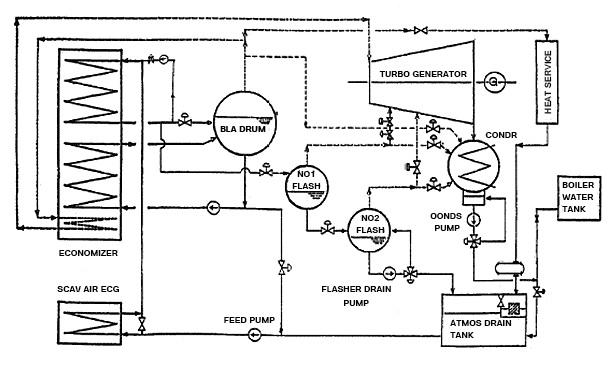The use of exhaust gases from diesel main propulsion engines to
generate steam is a means of heat energy recovery and improved plant
efficiency.
An exhaust gas heat exchanger is shown in Figure above. It is simply a
row of tube banks circulated by feedwater over which the exhaust gases
flow. Individual banks may be arranged to provide feed heating, steam
generation and superheating. A boiler drum is required for steam
generation and separation to take place and use is usually made of the
drum of an auxiliary boiler.

Fig: Auxiliary steam plant system



